In AP United States History, the interactions between American Indians and Europeans are crucial for understanding the dynamics of early American history. These interactions, marked by trade, conflict, alliances, and cultural exchanges, significantly shaped the development of colonial societies and impacted indigenous populations. From initial cooperation and mutual curiosity to violent conflicts and long-term consequences, the relationships between Native Americans and European settlers were complex and varied, influencing the trajectory of North American history.
Learning Objectives
In studying the interactions between American Indians and Europeans, you will be introduced to the complex relationships that developed through trade, conflict, and alliances. The impact of these interactions on indigenous societies and European colonial expansion will be explored. You will examine how cultural exchanges, territorial disputes, and shifting power dynamics shaped the development of North America. The long-term consequences, including the displacement of Native American populations and the transformation of colonial societies, will be analyzed.
Initial Encounters and Trade
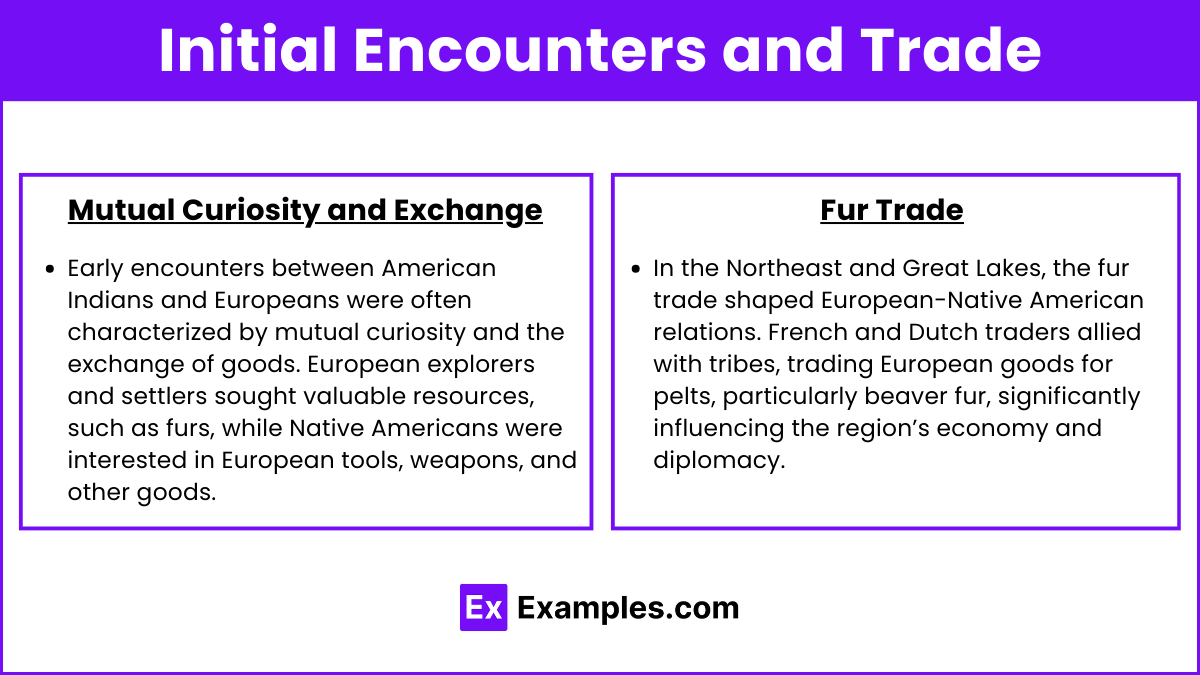
Mutual Curiosity and Exchange: Early encounters between American Indians and Europeans were often characterized by mutual curiosity and the exchange of goods. European explorers and settlers sought valuable resources, such as furs, while Native Americans were interested in European tools, weapons, and other goods.
Fur Trade: In regions like the Northeast and Great Lakes, the fur trade became a cornerstone of European-Native American relations. French and Dutch traders established alliances with Native American tribes, exchanging European goods for valuable pelts, especially beaver fur. This trade network played a significant role in shaping the economy and diplomacy of the region.
Conflict and Resistance
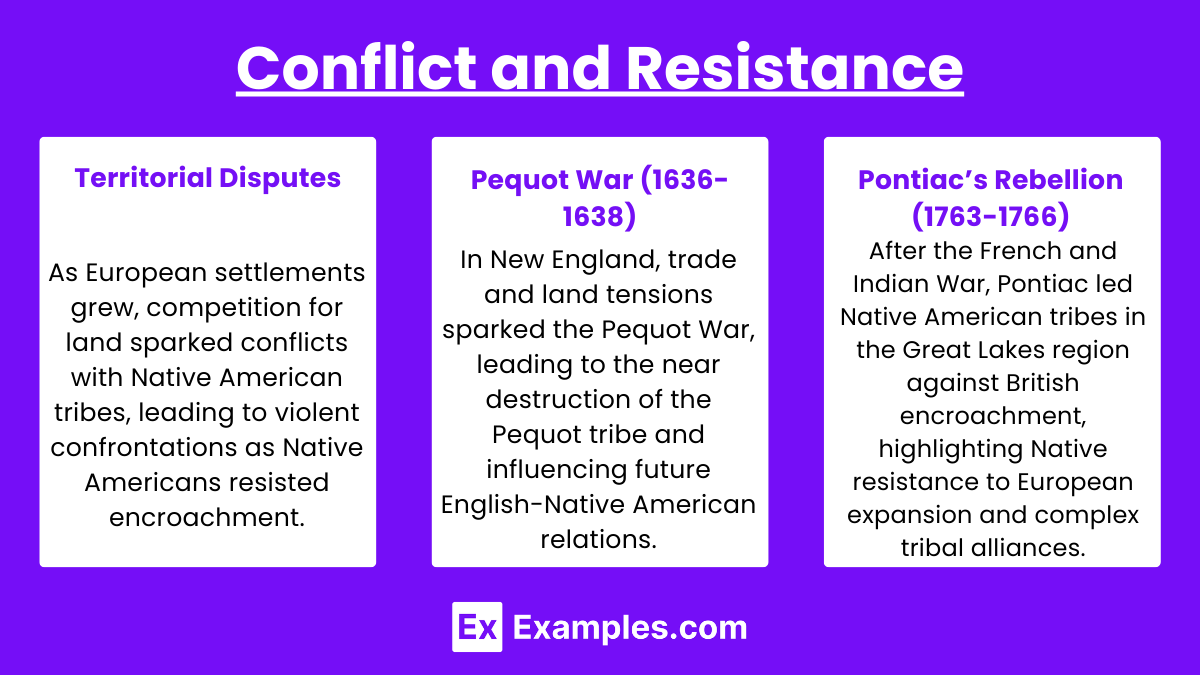
Territorial Disputes: As European settlements expanded, competition for land and resources intensified, leading to conflicts with Native American tribes. Disputes over land often escalated into violent confrontations, with Native Americans resisting encroachment on their territories.
Pequot War (1636-1638): In New England, tensions between English settlers and the Pequot tribe over trade and territory led to the Pequot War. The conflict resulted in the near destruction of the Pequot tribe and set a precedent for future English-Native American relations in the region.
Pontiac’s Rebellion (1763-1766): Following the French and Indian War, Native American tribes in the Great Lakes region, led by Pontiac, rebelled against British policies and encroachment on their lands. The rebellion highlighted Native American resistance to European expansion and the complex alliances between tribes and European powers.
Alliances and Diplomacy
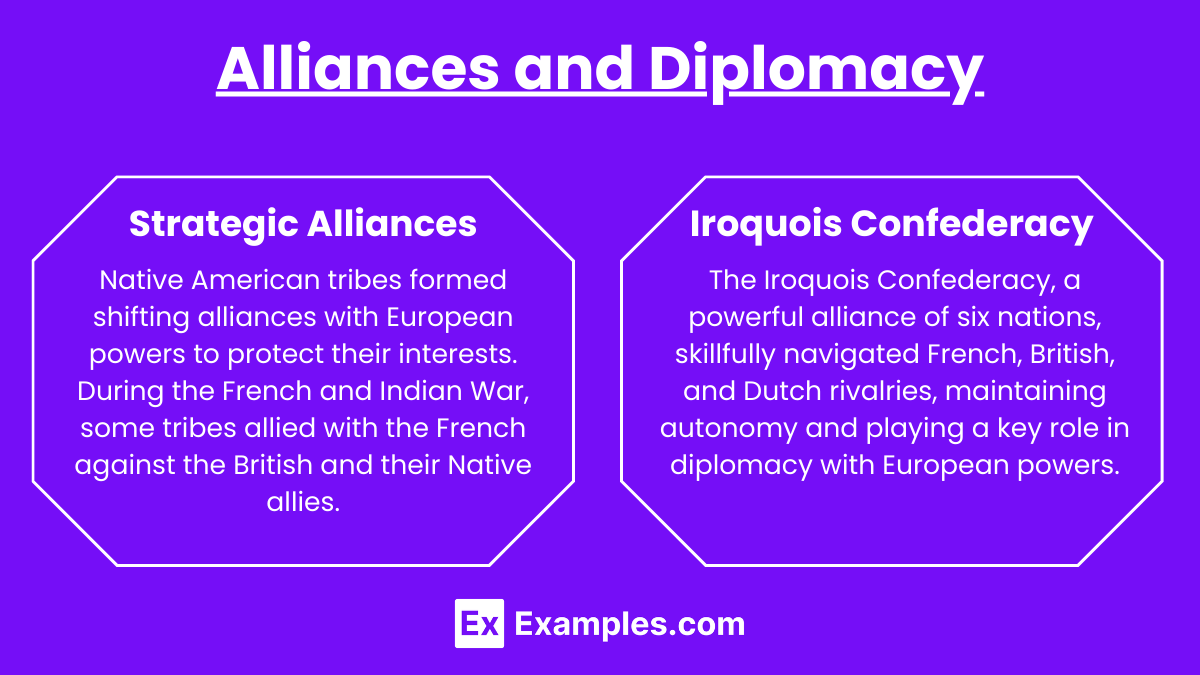
Strategic Alliances: Many Native American tribes formed alliances with European powers to protect their interests and counter rival tribes. These alliances were often fluid, shifting as the balance of power changed. For example, during the French and Indian War, several tribes allied with the French against the British and their Native American allies.
Iroquois Confederacy: The Iroquois Confederacy, or Haudenosaunee, was a powerful alliance of six Native American nations that played a crucial role in diplomacy with European powers. The Confederacy skillfully navigated the competing interests of the French, British, and Dutch, maintaining relative autonomy while leveraging European rivalries to their advantage.
Cultural Exchange and Adaptation
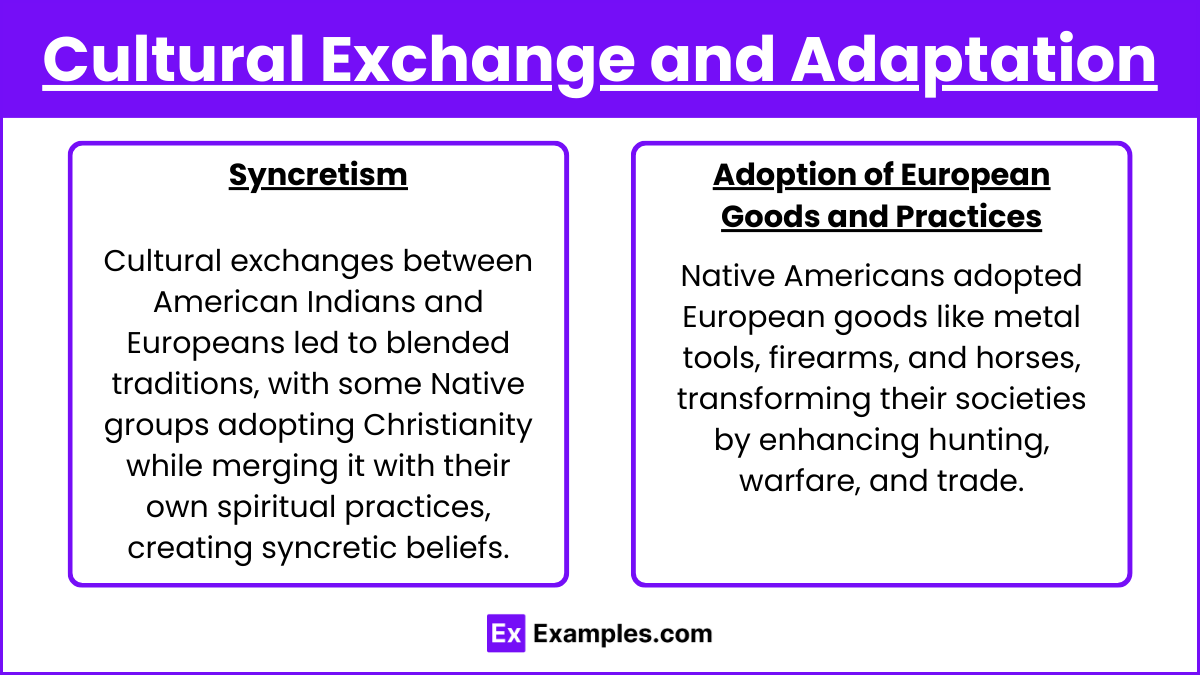
Syncretism: Cultural exchanges between American Indians and Europeans led to the blending of traditions, beliefs, and practices. For example, some Native American groups adopted Christianity while incorporating elements of their own spiritual practices, leading to syncretic religious beliefs.
Adoption of European Goods and Practices: Native Americans incorporated European goods, such as metal tools, firearms, and horses, into their daily lives. These new technologies often transformed indigenous societies, improving their hunting, warfare, and trade capabilities.
Long-Term Consequences
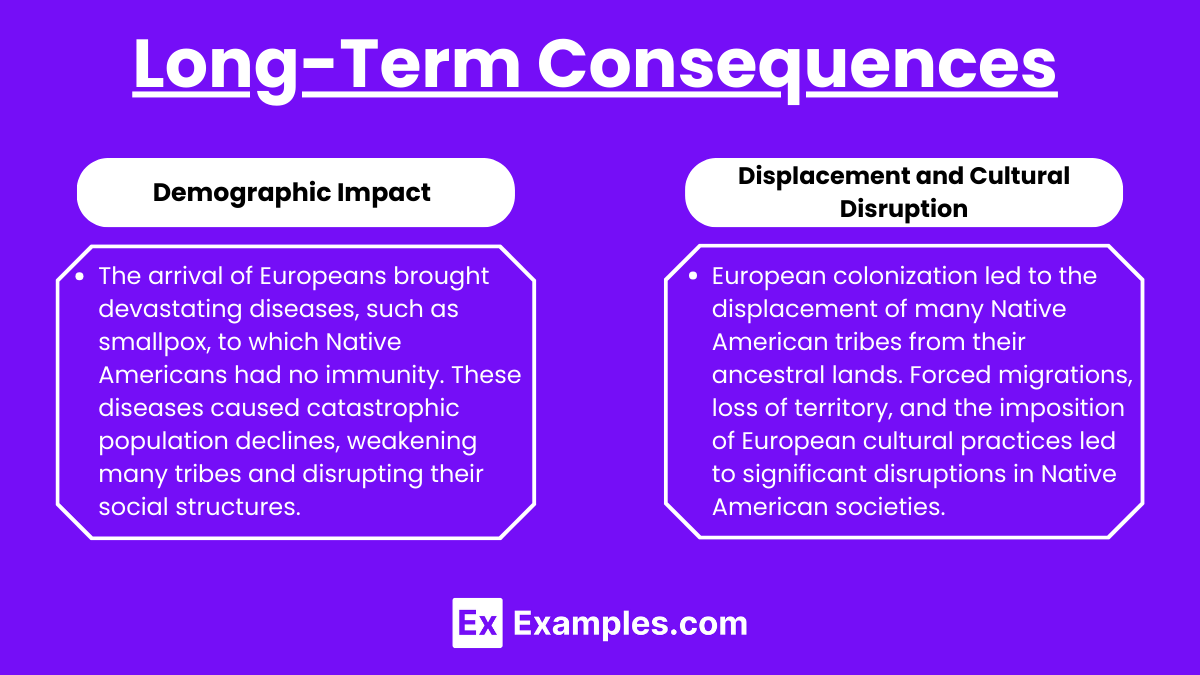
Demographic Impact: The arrival of Europeans brought devastating diseases, such as smallpox, to which Native Americans had no immunity. These diseases caused catastrophic population declines, weakening many tribes and disrupting their social structures.
Displacement and Cultural Disruption: European colonization led to the displacement of many Native American tribes from their ancestral lands. Forced migrations, loss of territory, and the imposition of European cultural practices led to significant disruptions in Native American societies.
Examples
- Jamestown and the Powhatan Confederacy: The English settlers at Jamestown (established in 1607) had complex interactions with the Powhatan Confederacy, marked by periods of trade, conflict, and uneasy truces. The Powhatan initially assisted the settlers but tensions over resources led to the First Anglo-Powhatan War.
- The Pueblo Revolt (1680): A successful uprising by the Pueblo people against Spanish colonizers in present-day New Mexico. The revolt was a response to the Spanish suppression of indigenous religious practices and exploitation, leading to the temporary expulsion of the Spanish.
- King Philip’s War (1675-1676): A conflict in New England between English settlers and Native American tribes led by Metacom (King Philip). The war resulted from tensions over land, resources, and cultural differences, ending in a devastating defeat for the Native Americans.
- French and Indian War (1754-1763): A conflict between the British and French, with various Native American tribes allied on both sides. The war reshaped the power dynamics in North America, with the British gaining control over former French territories.
- The Trail of Tears (1838-1839): Although occurring later in U.S. history, this forced relocation of the Cherokee and other southeastern tribes to lands west of the Mississippi River was a direct result of the expansionist policies rooted in earlier European interactions with Native Americans.
Multiple Choice Questions (MCQs)
Which European power established a relatively cooperative relationship with Native American tribes through the fur trade?
A. Spain
B. England
C. France
D. Portugal
Answer: C
Explanation: The French established cooperative relationships with Native American tribes in North America through the fur trade, particularly in the Great Lakes and Mississippi River regions.
What was a significant outcome of King Philip’s War (1675-1676)?
A. Expansion of Native American territories
B. Strengthening of Native American alliances
C. Decimation of Native American populations in New England
D. Creation of new trade routes
Answer: C
Explanation: King Philip’s War resulted in the decimation of Native American populations in New England, leading to the loss of indigenous power and significant English expansion.
What was the primary cause of Pontiac’s Rebellion (1763-1766)?
A. British trade restrictions
B. French territorial expansion
C. British encroachment on Native American lands
D. Spanish religious persecution
Answer: C
Explanation: Pontiac’s Rebellion was primarily caused by British encroachment on Native American lands following the French and Indian War, leading to a widespread Native American uprising against British rule.

